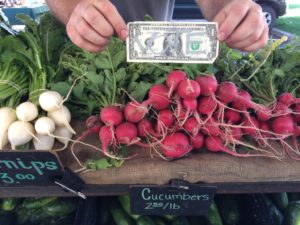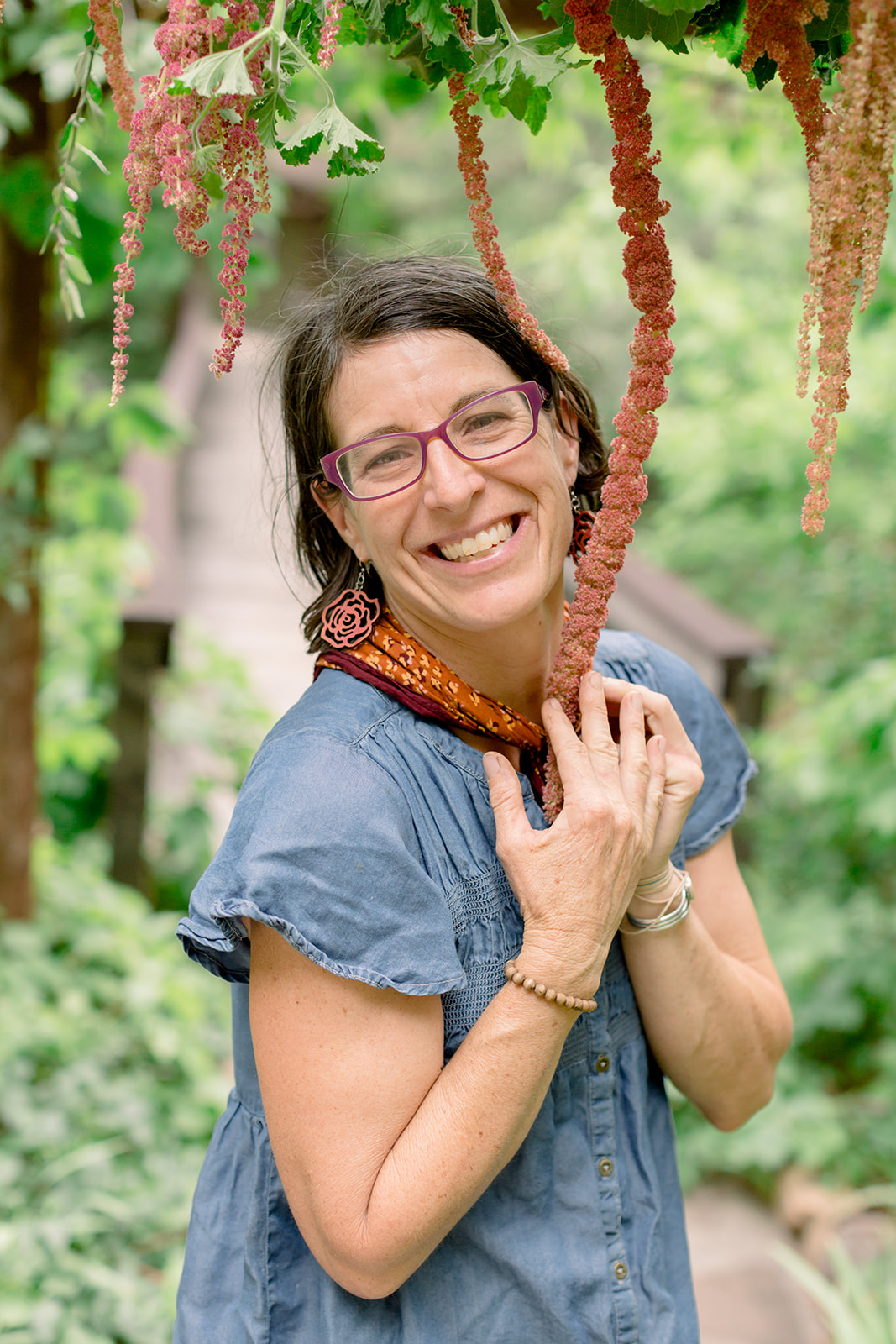 Farmers market season is in full swing, and if you are like me, this is the highlight of your week—a chance to socialize with the community and interact with farmers, sampling the array of what can be grown in our region, booth by booth. Last year I worked at Whipstone Farm’s market stand in Prescott and Flagstaff. The hours flew by while ringing up vegetables and counting back change, restocking vegetables and flowers, and sharing recipes. The morning is a blur of short, satisfying interactions with people who are buying what we grew, harvested and washed that week and loaded in the truck well before dawn on only a few sips of strong coffee.
Farmers market season is in full swing, and if you are like me, this is the highlight of your week—a chance to socialize with the community and interact with farmers, sampling the array of what can be grown in our region, booth by booth. Last year I worked at Whipstone Farm’s market stand in Prescott and Flagstaff. The hours flew by while ringing up vegetables and counting back change, restocking vegetables and flowers, and sharing recipes. The morning is a blur of short, satisfying interactions with people who are buying what we grew, harvested and washed that week and loaded in the truck well before dawn on only a few sips of strong coffee.
I’ve never worked a retail job before, so I was surprised and happy to find that our customers were almost always in a good mood. Even though I was exhausted, their energy sustained and invigorated me. In Prescott I did not know as many people as in Flagstaff, so I remembered them by what they purchased, what they liked to cook, and their various market bags. I loved observing the parade of humanity—the frail, older couples holding hands, the families and the dog owners at times wreaking havoc. I noted the old and beautiful women living alone who sighed at the sight of our giant heads of lettuce, exclaiming, “It’s only me, that’s way too much food.” I shared a simple recipe and wished the food could be the balm to soothe their loneliness when they ate this delicious meal alone.
Even functioning on little sleep, I was always overwhelmed by the kindness and the gratitude of our customers. There was a couple that frequented our stand every week to shop for the restaurant workers at their favorite breakfast spot. I was curious about the individual paper bags they filled with itemized lists of vegetables printed and stapled to them. They described how their mission evolved one Saturday morning as they were being served breakfast. They told their server they were going to the farmers market and she lamented that her shift prevented her from going. So they offered to pick up some things for her, and the first list was written on a napkin. This errand evolved into an email list including servers, kitchen staff and the manager. I saw how good it makes them feel to do this heartfelt shopping for others.
I witnessed countless acts of generosity and compassion in my face-to-face human interactions and I found hope amidst the reports of the great divide between Drumpf and Clinton supporters on the radio every day during the contentious election season. At the hot and windswept Chino Valley market in the feed store parking lot on Thursday afternoons, I got a peek at conservative America and I loved every person I met. There was a middle-aged Hispanic woman with painted eyebrows who complained about her husband and kids, confiding that she dreams of escaping for a night to an Ashfork motel. And the recently retired farmer from Washington in head-to-toe denim who wished he brought his tractor with him to his new home. The construction worker who was in a great mood because his boss told him to go home early and still record a 10-hour day. He was delighted to find the makings for a fresh salsa on his way to pick up chicken feed. This market stand was the leveling ground. We all huddled together under the shelter of the E-Z UP when the monsoons spat fat raindrops, and each of us held a corner of the tent when it threatened to take flight in a sudden gust of wind. We grow food and people need to eat. It doesn’t matter whom you vote for—here amidst the vegetables we share common ground.
I loved the older men who stood in line to buy only one bunch of turnips probably because Cory, one of the farm owners, convinced them it was tasty with his jovial-yet-persistent sampling efforts. I watched a grown daughter position her mother’s wheelchair so she could bury her face in each peony bunch like a child at a candy store. I saw how the fragrance of sweet peas or red stalks in a bundle of rhubarb summoned nostalgia in most people and elicited descriptions of their grandmothers’ gardens. I took a moment to grieve the loss of an era where every grandmother was a food producer and cut flower grower and a child could get lost in the aroma of sweet pea vines while shucking sweet corn on the front porch. I wanted to shake these people by the shoulders and tell them it’s not too late to plant a garden like this for their grandchildren. I reminded them that the knowledge is inside them, the blueprint is simple; a rhubarb plant returns from beneath the ground every year announcing that it is time to make pie, and you make pie. Each of us is the keeper of seeds and the maker of memories for a small person who is longing for wonder and in need of dirt.
Farmers execute this elaborate performance, setting up and tearing down an entire store every Saturday and Sunday morning for six months. They bring what they have grown to market and arrange everything in enticing baskets and crates so their harvest can be shared. I always loved wandering the market as a customer to get my fill and chat with the farmers I admired. Now I feel proud to be on the other side. Now I’m on the team with dirt under their nails and roughened hands. I am not the consumer but the maker, the grower, and I have something to offer the world that is beautiful and nourishing and real. I have my own 100-square-foot shop that connects people to the earth, to the farm, to the soil, to the places of abundance and unimaginable beauty in their neighborhood.
Kate Watters is a plant enthusiast, writer, artist and musician. She has been a resident of Flagstaff for almost 20 years, and recently took a hiatus to Santa Cruz, Calif., where she was farm apprentice at the Center for Agroecology and Sustainable Food Systems. She is now armed with hand pruners and a harvest knife and intends to apply her newfound knowledge and passion to growing all kinds of plants in northern Arizona.

